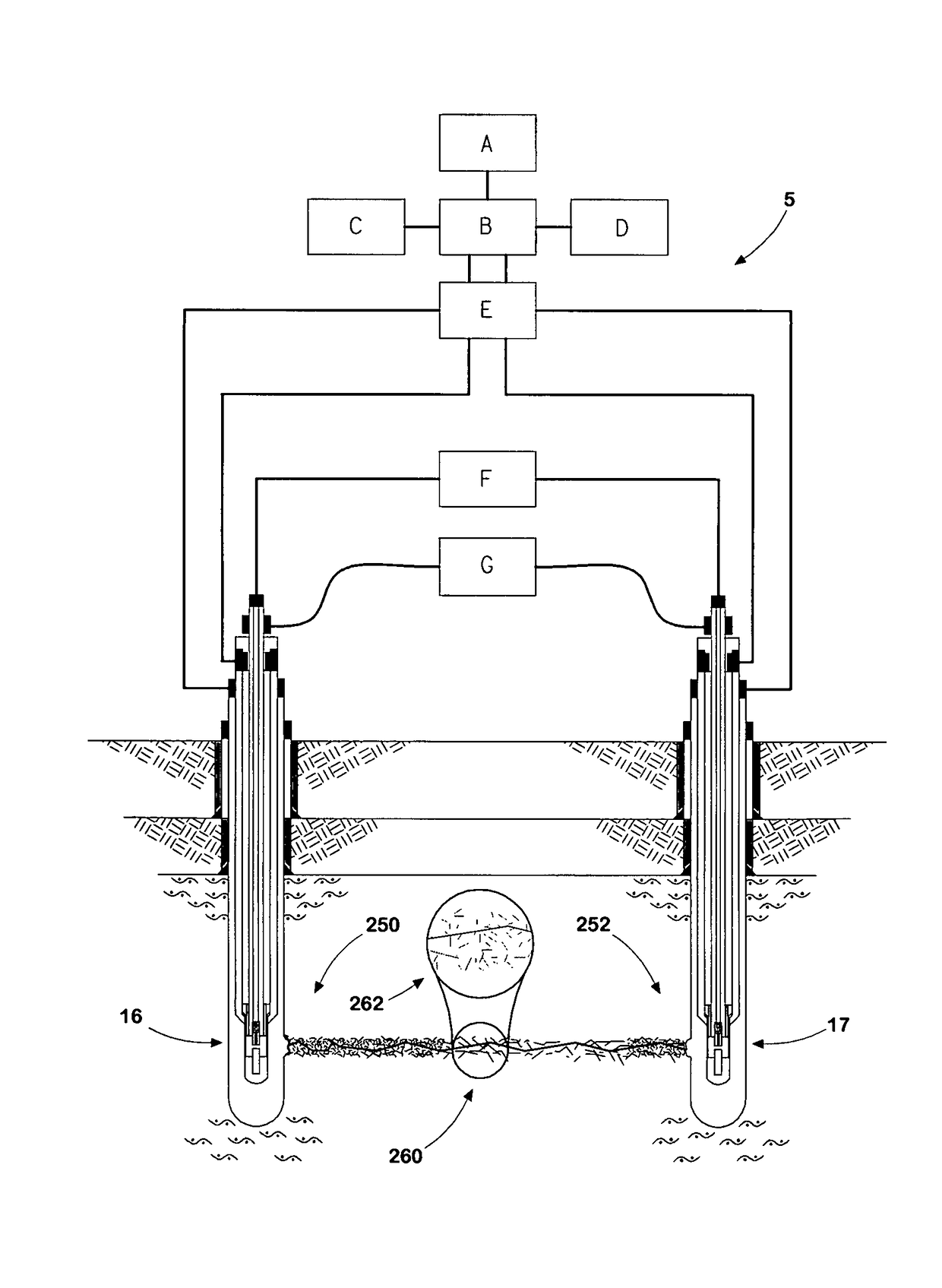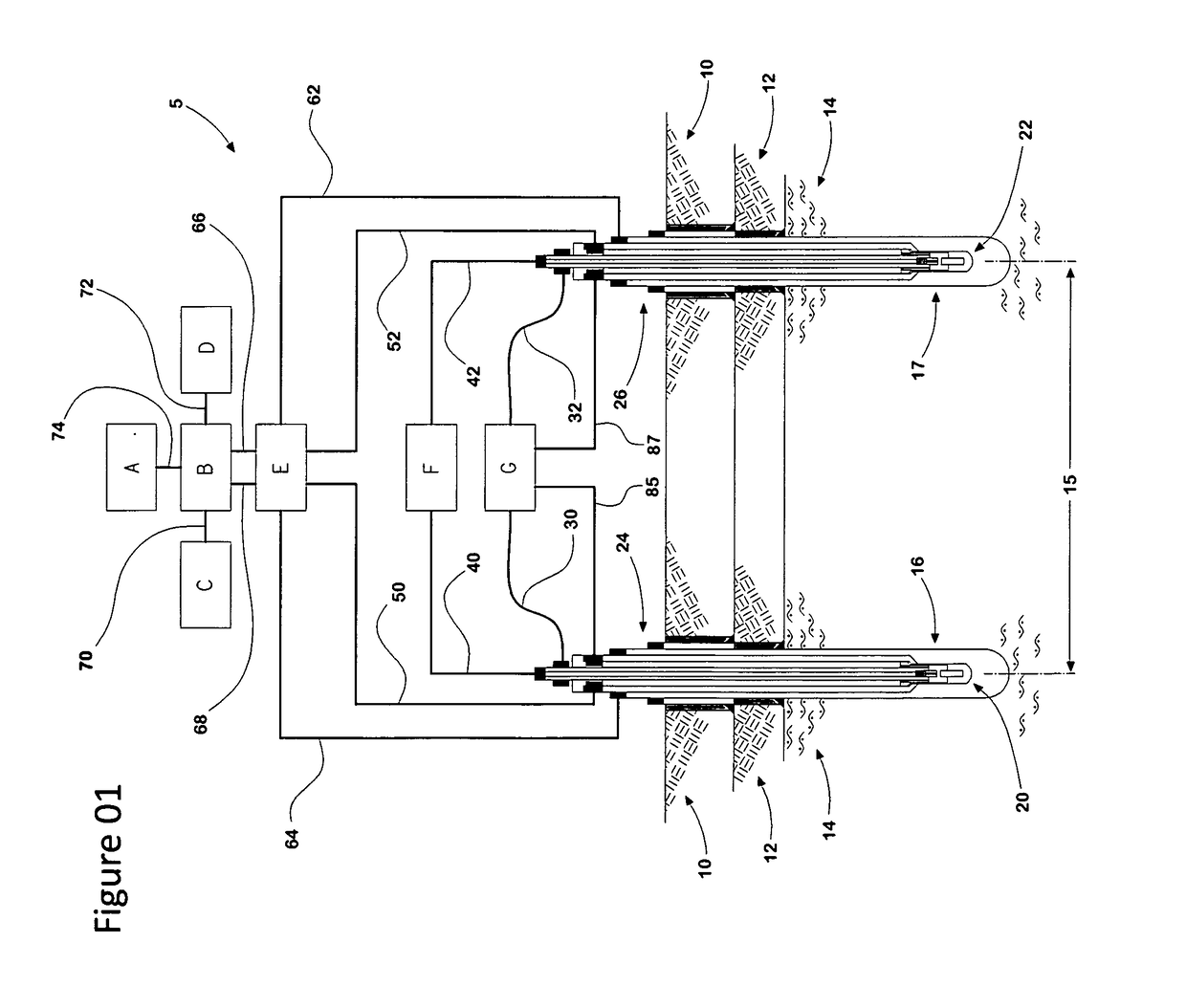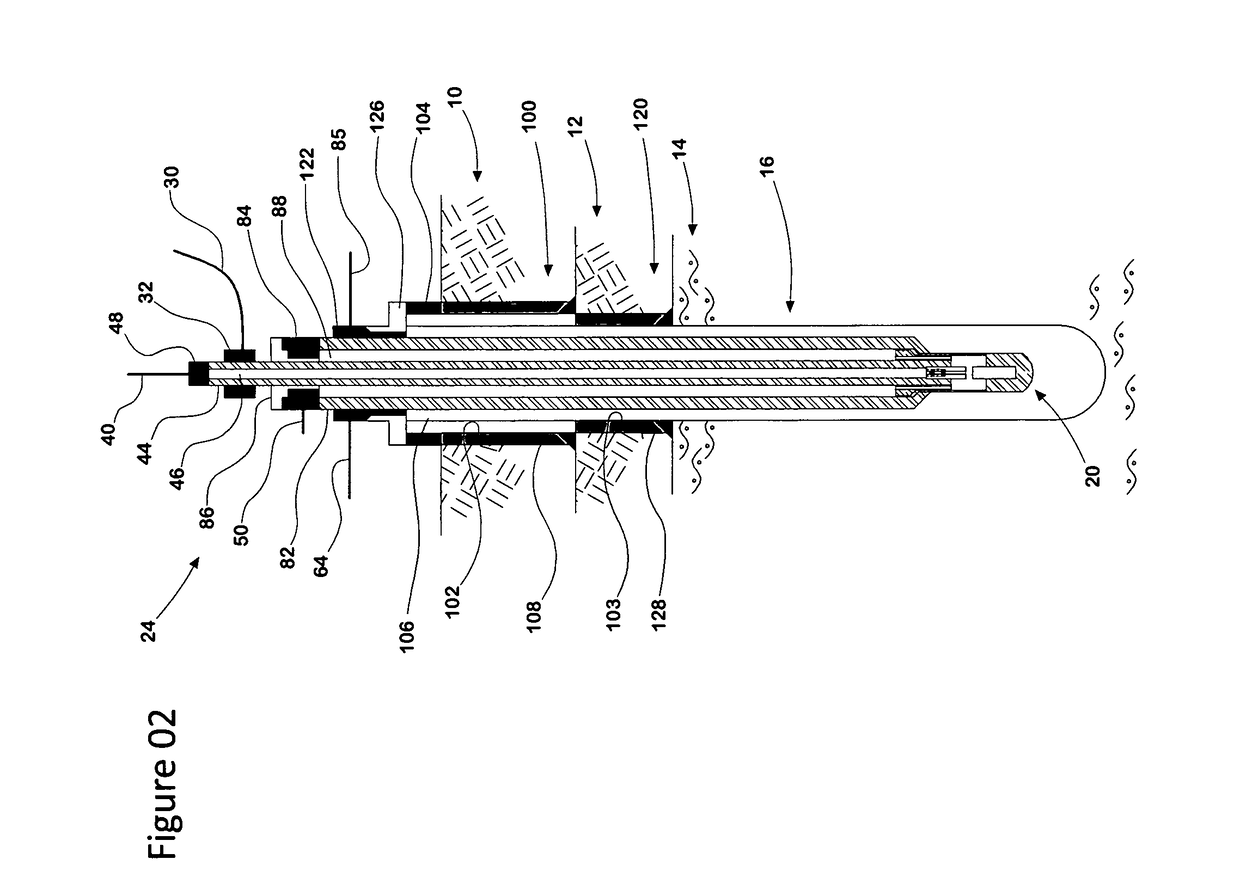Once the formations production drive mechanism can no longer economically force the hydrocarbons to the
wellbore, more expensive and complicated secondary and
tertiary technology methods are employed if additional hydrocarbons are to be produced into a
wellbore.
A typical cause for resource reservoirs to lose production related drive pressures is the resource formation permeability becomes partially or fully plugged over time, thereby isolating the any production drive pressure remaining from the
wellbore.
The primary causes for the low percentage level of
oil production is the loss of useable drive pressure through pressure depletion or produced particle and / or chemical precipitate clogging or completely plugging the productive formation's permeability.
The result of undesirable drilling or completion processes and / or the cumulative effects of reservoir production material swelling, movement and / or the chemical generation of precipitous particle accumulation of materials within the oil bearing formation tend to reduce or totally inhibit the
oil production process.
These wellbore
diameter constraints severely limit the physical size of any mechanical and / or electrical oscillation emitter systems that can be deployed downhole.
The universally small completed wellbore diametrical constraint has limited the ability to develop
high energy density
pulsed power storage means to operate electrical oscillation emitters that are deployed downhole for use.
Specifically, the wellbore diametrical constraint typically limits the practical downhole
energy storage capacity of the prior art electrical oscillator systems to ≦2.0 kJ.
While a few of the prior art teachings discuss or infer the use of larger downhole
energy storage means, none of them describe the specifications able to achieve
energy storage capacity above 2.0 kJ.
At low energy storage levels (≦2.0 kJ), the prior art electric
plasma oscillation emitters are practically limited to generating only minor near field formation modifications and / or low energy production stimulation.
The prior art
plasma oscillation apparatus have been unable to achieve sustained economically significant production enhancement due to their limitation of low
energy density coupled with the complexities of reliably operating intricate mechanical and / or electro-mechanical systems within the deployed tool that must be operated in a harsh downhole environment.
Due to the size limitations of the small plasma emitter's
capacitor energy storage sub-
system, the energy and power levels and wave forms of the shock
waves that this type of plasma emitter can generate is severely limited in its range.
The
cumulative effect of the low energy capabilities of the apparatus as taught by Ageev, is that it is only effective in generating near-field
filtration effects and has very little effectiveness, if any, in fracturing the formation.
Further, and again, due to the low
energy density limits on power and wave forms, this category of apparatus is only effective in generating very near-field formation
filtration enhancements that are temporary in nature.
These stated energy losses drastically decrease the acoustic and hydrodynamic
shock wave intensity due to the relatively smaller volume plasma.
Another
operational problem occurs with this type of plasma emitter due to the need for continuously replacing the
sacrificial metal wire filament after each plasma generation sequence.
Such electro-mechanical means generally do not operate reliably under the typically harsh downhole environment (
high pressure, high temperature, and corrosive fluids) coupled with repeated high power electromagnetic, acoustic and / or hydrodynamic shock generating events.
Further, these mechanical and / or electro-mechanical filament replacement systems typically lack reliability due to the surface rupture or sticking of the filaments at the point where they come into contact with the current conducting parts before, during and / or after the plasma generation.
The described
system is therefore operationally limited to near-field remedial
filtration treatment of the formation due to energy limitations; can operate only in relatively low bottom-hole temperatures due to temperature-limited
electronic equipment failures, and can only operate in non-horizontal wellbores due to lack of the ability to push the tool horizontally to the bottom of the hole without
third party equipment.
Further it is common knowledge that it would be unworkable to supply an electrical energy surge of 2.0 MJ of energy from a surface location through a long wire line due to the
physical limitations of current wire line insulation and temperature related strength technology for typical oilfield wellbore deployable wire lines.
The
energy density of capacitors has been the key obstacle in deploying increased
capacitor energy storage systems within downhole plasma emitter tools based on wire line deployment.
Therefore, as a practical matter, even at the inferred maximum energy compression of 0.32 GJ / plasma (1.3 t of TNT)
discharge, as taught by Bethbeder, the described apparatus would not be able to achieve his stated 30 m radial zone of rubblized formation along the axis of a horizontal wellbore no matter how many repetitive discharges were to be used.
Still further, any desired control of the placement of static
macro fractures would be lost under these circumstances.
Thus the teachings of Bethbeder a) fail to describe a practical means of providing up to 2.0 MJ downhole energy storage; b) fails to describe sufficiency of downhole energy storage to be able to conduct near-field electrical formation fracturing results as described by Bethbeder; c) joins the categorical ranks of low energy pulsed plasma emitter oscillation means and d) describes an impractical and ineffective method of attempting to combine the use of electrical and static
hydraulic fracturing.
These low energy pulsed plasma emitter oscillator systems appeared to have great promise but have either been impractical to economically deploy or relegated to economically insignificant niche operations due to low energy levels available.
None of the prior art has provided an entirely workable or an economically significant means of generating formation modifications and / or resource mobilization within a resource bearing formation through the use of electric plasma oscillators.
 Login to View More
Login to View More  Login to View More
Login to View More 


